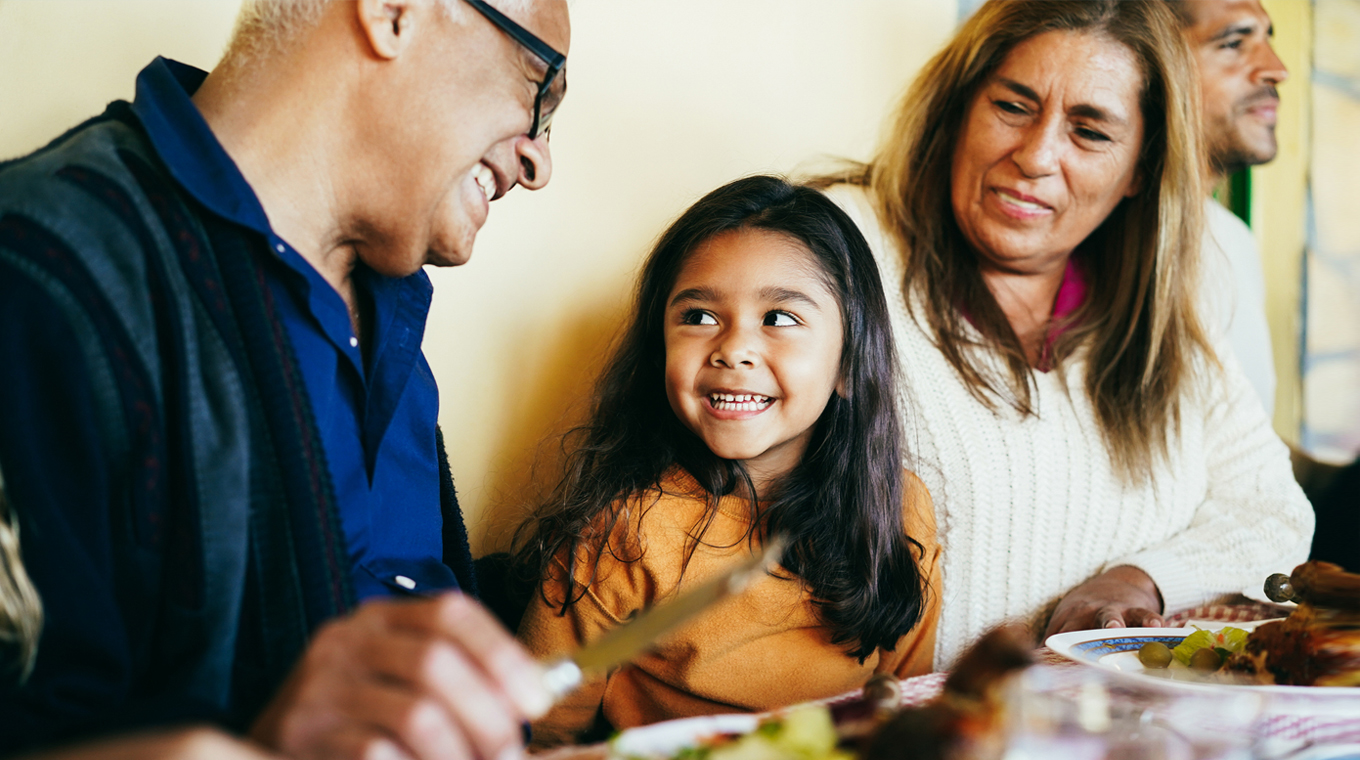In this article
There are many things parents do to keep their kids healthy. We teach them to not touch hot stoves. We remind them to zip up their coat when it’s chilly. We make sure they wash their hands before touching their food (and truly anything else going in their mouth). But, of all the battles, most parents know the one that tops the list — children and healthy eating.
We all know encouraging our children to eat healthily is beneficial, but what does that look like when it comes to their overall health? Read on for healthy eating tips for kids and the breakdown of healthy eating guidelines for your child’s age group.
What to know about healthy eating benefits

Aside from the thought that eating healthy kids keeps kids healthy, there are tons of other healthy eating benefits kids will experience regularly.
Health effects
Strong bones, lean muscle, and a clear and focused mind are only a few of the positive health impacts that come with kids eating healthy. When children enjoy nutritionally dense food, it positively impacts their physical, mental, and emotional health.
Better mood and sleep
We’ve all heard of, and probably experienced, what it is to be hangry. Yes, eating too much or too little impacts blood sugar levels and can lead to feelings of fatigue and irritation and impact the ability to focus. The key to combating that? Make sure your child is regularly eating nutrient-dense food.
The same goes for improving your child’s sleep. There is nothing worse than going to bed on an empty stomach. Hunger pangs can make for a restless night, so make sure your child eats enough to satiate their hunger but not too much that they become uncomfortable trying to catch some shut-eye.
Healthy eating tips for kids

Now that we know the benefits of kids eating healthy, what healthy eating tips can we use to make sure our kiddos are getting all the nutrition they need to thrive and flourish?
Model healthy behaviors
Treating food as fuel, and not grouping food as good or bad food, will have a lasting impact on making sure your child chooses a balanced diet over disordered eating. Kids aren’t born thinking that carbs are bad or that diets that eliminate certain food groups is the way they should eat. They see how you feed your body and take cues from you.
“Insisting your kids eat only so-called 'healthy' foods can contribute to shame around food that may carry into adulthood and play a part in disordered eating behaviors,” Kristin Carlino, a registered dietitian and nutritionist, told Insider.
Eat as a family
Having dinner as a family is a great, healthy eating practice. It allows you to observe their eating habits and make sure they aren’t distracted by TV or something else that can lead to mindless eating. If they’re focused on meal time, they’re more likely to recognize hunger cues their bodies send to tell them when they’re full.
Get your kids involved
Whether it’s meal planning, prepping, or actually working together in the kitchen, allowing your kids to be involved in the process sets them up for healthy eating habits. “My daughter and I like to look at the recipes, and she gets the ingredients (fruits and veggies) for me that the meal calls for," Hilary R., mom of one, told Mom.com. "She helps me create the meal and ends up feeling so proud and accomplished — and of course, thinks it tastes better because of it.”
The breakdown: Healthy eating by age group

So what exactly does healthy eating by different ages look like? According to the Mayo Clinic, there are different criteria for different age groups. But one thing that they all have in common is that they should include the essentials: protein, fruits, vegetables, grains, and dairy.
Ages 2 to 4 years old
At this age, you should be aiming for your toddler to consume about 1,000 to 1,600 a day, depending on any growth spurts and their level of activity.
Ages 5 to 8 years old
At this age, you should be aiming for your elementary-age student to consume about 1,200 to 2,000 a day, depending on any growth spurts and their level of activity.
Ages 9 to 13 years old
At this age, you should be aiming for your toddler to consume about 1,400 to 2,600 a day, depending on any growth spurts and their level of activity.
Ages 14 to 18 years old
At this age, you should be aiming for your toddler to consume about 1,800 to 3,200 a day, depending on any growth spurts and their level of activity.
Depending on your child's age, the guidelines specify how many of those calories should be made up of protein, fruits, vegetables, grains, and dairy.
When to call a doctor
Physically, there are a few different symptoms kids may present with if they aren’t getting the nutrition they need.
Changes to their skin: An increase in dry skin, rashes, and bruising easily.
Changes to their hair: Thinning hair that falls out often and easily.
Dental health: Their gums bleed easily and there are changes with their tongue, like being swollen or shriveled.
If you’re concerned that your child isn’t enough or that their pickiness is interfering with their growth, give their medical provider a call.




